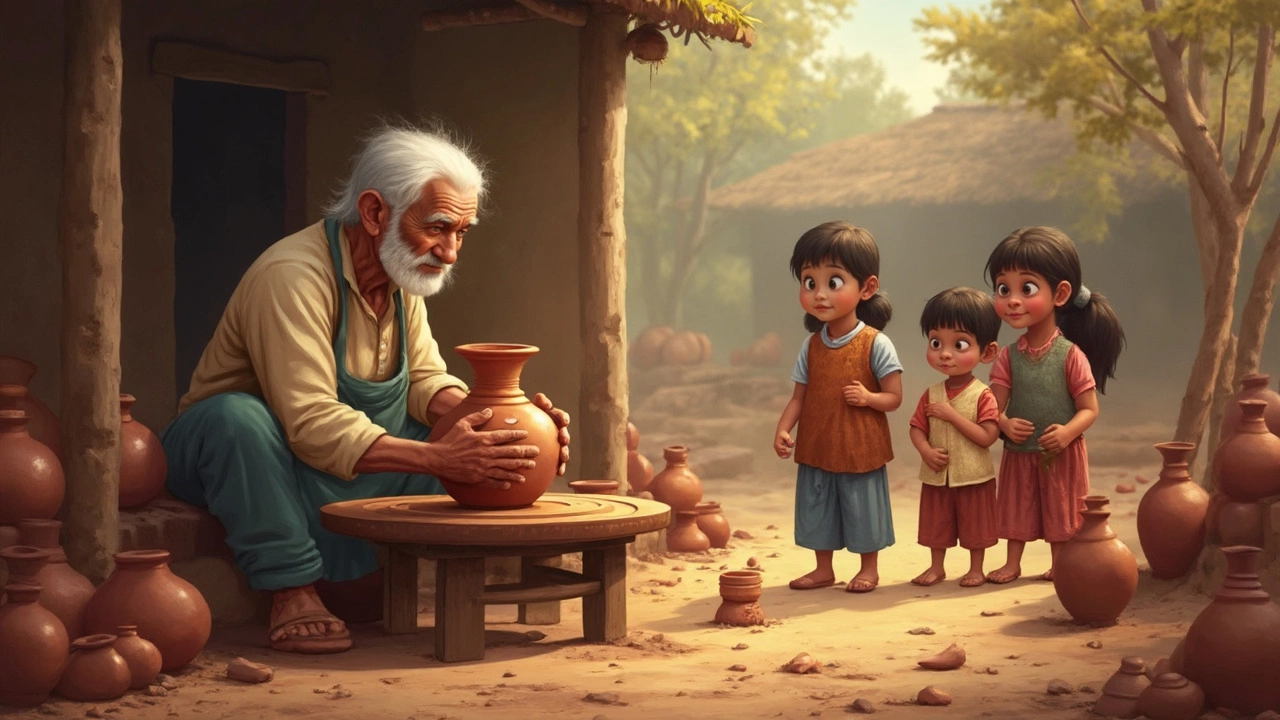Pottery History in India: Ancient Crafts That Still Shape Today
When you think of pottery history, the long, unbroken tradition of shaping clay into functional and sacred objects across the Indian subcontinent. Also known as Indian ceramics, it’s not just about bowls and jars—it’s about how people lived, worshipped, and traded for over 5,000 years. This isn’t some faded museum piece. Even today, in villages from Rajasthan to Tamil Nadu, hands still press wet clay into shapes passed down through generations. The same techniques used to make Indus Valley pots in 2500 BCE are still alive in the hands of artisans who never learned to read but know exactly how much water to add, how long to fire, and when to stop shaping.
Indian terracotta art, the use of baked clay to create everything from household items to temple idols is everywhere you look in India’s past. At Mohenjo-daro, archaeologists found tiny figurines of dancing women and animals, all made from fired clay. In Uttar Pradesh, the famous Black and Red Ware pots from 1500 BCE show early mastery of kiln control. And in Tamil Nadu, the traditional Indian pottery, hand-built, wood-fired vessels used in daily rituals and festivals still carry the same patterns as those found in Chola-era ruins. These aren’t random designs—they’re symbols of protection, fertility, and connection to the earth.
What makes Indian pottery unique isn’t just its age—it’s how deeply it’s woven into culture. In Gujarat, potters still make lamps for Diwali using the same molds their grandparents used. In West Bengal, the terracotta horses of Bankura aren’t just decorations—they’re offerings to village deities. In Bihar, the famous Sujni embroidery on pottery began as a way to mark ownership, and now it’s a signature style. Even today, when a new house is built in rural India, it’s common to place a clay pot filled with water near the entrance—no one asks why. Everyone just knows it’s the right thing to do.
You won’t find pottery history in textbooks as a standalone chapter, but if you follow the clay, you’ll see the whole story of India: trade routes that carried glazed pots from the Deccan to Afghanistan, religious shifts that changed how idols were made, colonial rule that nearly killed village kilns, and now a quiet revival as young designers rediscover handmade textures. The pots didn’t just hold grain or water—they held memory, identity, and continuity.
What you’ll find below are real stories from real places: the forgotten kilns of Odisha, the women of Madhya Pradesh who shape pots without wheels, the revival of ancient glazes in Andhra Pradesh, and how one family in Rajasthan still uses cow dung as fuel after 300 years. These aren’t just articles—they’re records of a living craft that never stopped being relevant. You don’t need to be a historian to appreciate this. Just look at your hands. Someone, somewhere, shaped clay the same way centuries ago—and someone still does today.





